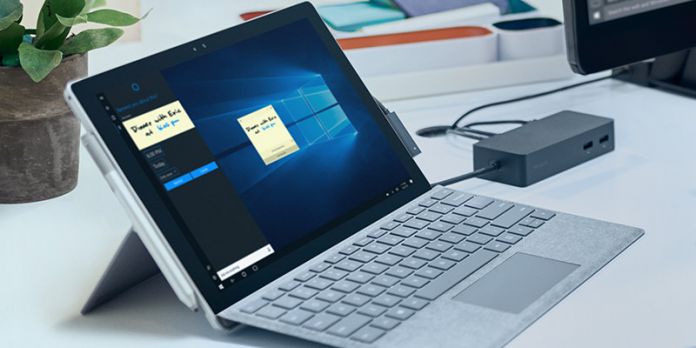Yesterday, Microsoft’s Ryan Gavin claimed only one in 100,000 Surface devices would fail. As I wrote then, there were important caveats to consider. Firstly, Gavin was talking about the first two years of a products life. Secondly, he was talking about the Surface Book and Surface Studio. The Surface Pro 4 was launched in 2015 and in 2017 it was replaced by the new Surface Pro, dropping the number system for new devices. Microsoft says new Surfaces are very reliable (I’ll let you be the judge), but the company says nothing about older devices. Gavin almost admitted that older devices may have issues and Microsoft has improved reliability since.
However you construe his words, it seems the Surface Pro 4 suffers from the brand’s famous longevity problems. There have often been concerns over reliability of the product, ranging from shaky screens and Type Cover issues. ComputerWorld points out that both these issues have been long term and are ongoing. Worse, Microsoft’s support team is rustling consumer feathers with their poor responses on Microsoft Answers. The shaky screen problem has been happening since the start of the Surface Pro 4’s life. The Answers forum thread for this problem is huge, like a maze of potential fixes. One disgruntled user bumped the thread last week to confirm the shaky screen problem persists. Microsoft offered the following response: “The screen issue that you are experiencing might be software-related, and could be addressed by installing all the latest Firmware and drivers on your device.” and “Thanks for bringing this to our attention. Our Engineers are looking into this and working hard to get this resolved as soon as possible. Please keep checking Windows Update often for the fix.” Microsoft’s response is vague at best and dismissive at worse. The company is saying there could be a fix, but maybe not. Needless to say, the original poster was unhappy and believes there is no fix. Instead, the customer is demanding a replacement unit for a device that clearly has a major flaw: “There is no fix for this. Please accept your responsibilities. I am being asked for £400 for a replacement after only 18 months of use from this item. Clearly it is not “fit for purpose” under UK / EU law. I would like a replacement laptop please and not be charged for your mistakes. Thank you… Now I am not only being asked to pay £400 for a replacement but someone else rang to tell me to “reimage” my device for which I now have to go and buy an 8GB USB stick and follow instructions in an email which will no doubt take hours. As I am not a computer expert this is appalling advice from Microsoft and no doubt I will be forced to take the laptop to a repair shop at even more expense. Why would @microsoft ask customers to perform reimaging to clear a hardware issue? @microsoft are not taking responsibility because they care about money more than people (of course). I will take them to court over this because unethical behaviour must be publicized and will help to encourage them to change their actions. Customers must vote with their feet and switch to other providers. @microsoft — when will you learn to be brave and to be honest with your customers to preserve their loyalty and your profits?” The biggest problem for customers is that Microsoft clearly doesn’t know whether it can fix this problem. Worse, the company is unwilling to take responsibility for it and compensate customers. Consumer Reports Called It In August, statistics by Consumer Reports pointed to consistent problems with Surface devices. Interestingly, the report shows that devices typically display issues in the second year of ownership. Two-year breakage rates were at 25%. It seems some Surface products are not built to last. The non-profit publication conducted a survey across 90,000 tablet and laptop owners. The results show an estimated 25 per cent with Surface products say they have “problems by the end of the second year of ownership.” Responding to the report, Surface head Panos Panay responded to Consumer Reports and questioned the results: “These improvements were unfortunately not reflected in the results of this [Consumer Reports] survey.” Panay’s defence was almost instantly undone by a leaked internal document that showed there are reliability problems. The document showed that Surface devices have high return rates. The chart from Microsoft shows that return rates for the Surface Book were at 17 percent through its launch period. In the next six months, the return rate was at 10 percent. The situation was little better for the Surface Pro 4, which had a 16 percent return rate through its launch.




